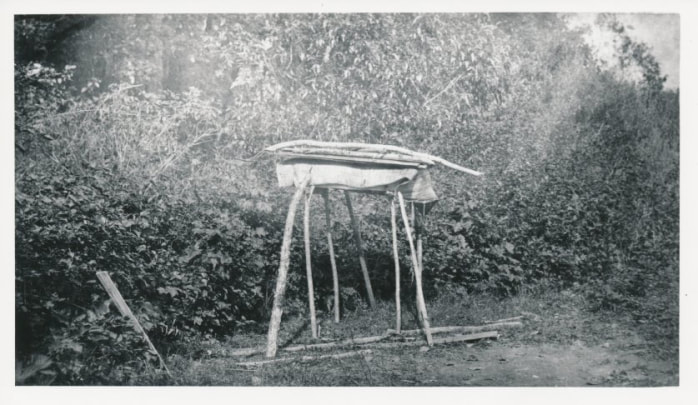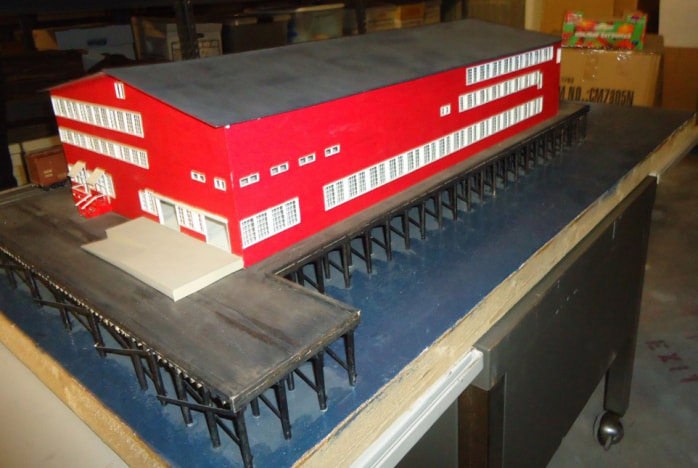|
Follow this link to listen to our podcast: Canoes to Caskets: The History of Death and Dying in Everett There’s something about the shift in the air during the month of October that opens our minds to discussions about mortality. With images of skeletons dancing in store windows and foam tombstones adorning the yards across town, the subject of death–at least in the context of fun and thrill–becomes a little more commonplace. But how do we react when the subject of death and dying comes up in conversation during other months of the year? And more importantly, how has that reaction evolved during the history of mankind? We’ve decided to embrace the spookiness in the air and talk about the evolution of the social perception of mortality and find out how Everett coped with the same difficult subject. Many of the artifacts actually come into our museum collection as a result of a death. They are heritage or heirloom items from a family member or passed down from a family collection. Often times, after somebody dies, the families go through the estates and have to make the difficult decision about what to do with the important pieces of that person’s life. If the family lacks the resources to care for it, typically they find that a museum is the best choice – knowing it will be cared for, as long as the artifacts meet the mission of the organization. Scroll down to take a look at some of the artifacts we pulled that reflect death and dying in Everett. This photograph is example of Native American burial practices. As discussed in the podcast, the traditional practice of above ground burial was placing canoes in trees, but in this photograph, the canoe is up on stilts. According to nps.gov, certain tribes of the Pacific Northwest commonly practiced above-ground burials using trees, scaffolds, canoes, and boxes on stilts, which decayed over time. When Queen Victoria’s husband Prince Albert died in 1861, the queen mourned his death for the rest of her life, sparking a change in how society mourned, as well. Along with elaborate funerals, it also became popular to wear mourning clothing for an extended period of time. We have many pieces of mourning clothing in our collection. This piece is a black jacket or bodice with puff sleeves, ca. late 1800s. It is made from crepe overlaid with lace. This is the type of clothing that would be worn in the first and second stages of mourning, with pops of muted colors, like blues and grays, added in the final stage. Black mourning jacket or bodice, ca. 1890, crepe, lace, velvet, hooks & eye Not only was mourning expressed in clothing, but Victorians also made jewelry and art from the hair of the recently deceased. We have multiple pieces in our collection that reflect this very practice including many pieces of jewelry. This piece, is made almost entirely of human hair, interwoven with beads and decorated with ribbon. This piece is encased an oval frame and the hair woven into decorative flowers. Interestingly, with proper care, hair remains quite stable, and the quality and detail of the work most likely looks just as good as when it was created. Hair art, ca. 1890, human hair, beads, ribbon, wood, metal, glass The Port of Everett donated a large collection of casket making tools and templates from the Cascade Casket Company, all found at the Collins Building by Port workers, before the building was torn down. Among these artifacts are wooden drawers, crate tops, hand drawings, edging samples, paper and metal templates for wood details, woodworking tools, and one large iron eye hook. The templates and edging samples were used to create the different shapes and edging styles on the caskets themselves. 2015.006.001, .002, .009, .033, .087, .090, .104, Multiple pieces from the Cascade Casket Company, Collins Buildings, ca. 1950s, wood, metal, paper Among the scale models in our collection is a model of the Collins Building itself. This is a 1/8th scale model build by modeler Robyn Boyd and donated by him & his wife Marilyn Boyd in early 2016. This model provides a great example of what the building looked like and you can envision it sitting along the port in downtown Everett. We couldn’t do these types of projects with help from historians past. Please check out the list below to browse our list of sources for this project. We’d like to give a shoutout to Lisa Labovitch of the Northwest Room at the Everett Public Library for her time during our research. Lisa is incredibly knowledgeable and the Northwest Room is an invaluable resource for the community.
Additionally, the Solie Funeral Home holds a recurring event called Death Cafe, where citizens can come in and chat with staff there about everything death and dying. Their website states that the mission of this event is to “increase awareness of death with a view to helping people make the most of their finite lives.” This is a great opportunity to have a candid discussion about mortality. Lastly, we’d like to thank the UK-based band The Whiskey Rebellion for allowing us to use their music. The album featured in our podcast discusses the themes of mortality and is, in their words, “a jaunty, fun look at embracing the final veil, and making the most of what you have before it’s over.” We couldn’t agree more. We hope you’ve enjoyed Canoes to Caskets and that you’ve learned a little something about this cool city. Don’t forget to check out our partners, and as always, feel free to reach out for anything and everything Everett. Contributors: Chase Dermott, Writer, Researcher, and Narrator Heather Schaub, Producer Elaine Carter, Researcher Sources: Everett’s Evergreen Cemetery: A Brief History by Patrick Hall The Graveyard to Graveyard Tour Guide hosted by Tom & Cindy Smith and Bill & Karen Read, courtesy of the Northwest Room, Everett Public Library History of Snohomish County Washington, Volume 1 by William Whitfield Evergreen Cemetery, 2011 Draft by David Dilgard, courtesy of the Northwest Room, Everett Public Library Port of Everett – Collins Casket Co./Cascade Casket Co./North Coast Casket Co. Historic Everett – Challacombe & Fickel Funeral Home Everett Public Library – Evergreen Cemetery US Gen Web Archives, cemeteries of Snohomish County Chirouse, Father Eugene Casimir (1821-1892), by Margaret Riddle Collins Building (North Coast Casket Company), Everett, by Margaret Riddle The History of Death and Burial Customs, by Kimberly Powell Death and Mourning Practices in the Victorian Age, by Marilyn A. Mendoza, Ph.D. Victorian Era Mourning Period Rituals, Clothes to Wear Victorians Made Jewelry Out of Human Hair by Rose Eveleth, Smithsonian.com Burial Customs and Cemeteries in American History, National Park Service
2 Comments
5/31/2023 09:22:41 am
Thanks for your post.
Reply
8/14/2023 07:53:54 am
Thanks for your post.
Reply
Leave a Reply. |
Archives
March 2020
Categories |















 RSS Feed
RSS Feed